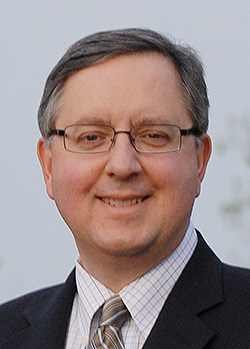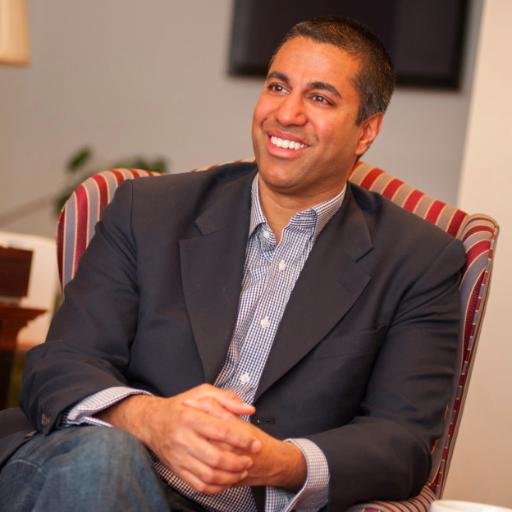 Despite claims from some industry-backed researchers and former members of Congress that Net Neutrality has reduced investment in telecommunications, a new research note from Deutsche Bank shows America’s top telephone and cable companies are spending billions on fiber upgrades to power wireless, business, and consumer broadband.
Despite claims from some industry-backed researchers and former members of Congress that Net Neutrality has reduced investment in telecommunications, a new research note from Deutsche Bank shows America’s top telephone and cable companies are spending billions on fiber upgrades to power wireless, business, and consumer broadband.
“Telecoms have become much more public signaling their intent to increase fiber investment, with AT&T and Verizon leading the spending ramp,” reports Deutsche Bank Markets Research.
Verizon has been on a fiber spending spree in the northeastern United States, signing contracts with Corning and Prysmian worth $1.3 billion to guarantee a steady supply of 2.5 million miles of fiber optic cable Verizon plans to buy over the next three years. Much of that spending allows Verizon to lay a foundation for its future 5G wireless services, which will require fiber to the neighborhood networks. But in cities like Boston, Verizon is also once again expanding its FiOS fiber to the home service to consumers.
AT&T is committed to connecting 12.5 million homes to gigabit-ready fiber broadband by 2019 — part of a deal it made with the FCC to win approval of its acquisition of DirecTV. AT&T claims it has already connected 5.5 million homes to its gigabit AT&T Fiber network, expected to reach 7 million by the end of this year.
Deutsche Bank thinks providers’ future drive towards 5G service will also simultaneously benefit fiber to the home expansion, because the same fiber network can power both services.
“To support the upcoming innovations such as autonomous driving, IoT, smart cities, the US needs to densify its fiber network,” Deutsche Bank said. “The U.S. fiber penetration rate is 20% vs. 75% for leading OECD countries, which suggests a large gap needs to be closed.”

Altice founder Patrick Drahi (second from left) and Altice USA CEO Dexter Goei (center) visit a Cablevision fiber deployment on Long Island, N.Y.
The bank predicts companies will spend around $175 billion over the next 10 years building out their fiber networks, with most of the spending coming from the phone companies, who may see fiber buildouts as their best attempt to level the playing field with cable operators’ hybrid fiber-coaxial cable networks. As cable operators expand their networks to reach more business parks, they have been gradually stealing market share for phone and data services from phone companies. Consumer broadband is also increasingly dominated by cable operators in areas where phone companies still rely on selling DSL services.
FierceCable notes Comcast and Altice have stepped up aggressive spending on fiber networks for their consumer and business customers. Altice is planning to decommission Cablevision’s existing coaxial cable network and move customers to fiber-to-the-home service. Comcast is deploying fiber services while still selling traditional cable broadband upgraded to DOCSIS 3.1, which supports substantially faster broadband speeds. The two networks co-exist side-by-side. Customer need dictates which network Comcast will use to supply service.
Customers benefit differently in each state, depending on what type of service is available. Comcast’s large footprint in Pennsylvania, outside of Philadelphia, is usually served by traditional coaxial cable. Verizon still sells DSL in much of the state. In Massachusetts, Verizon is building out its FiOS network to serve metro Boston while Comcast will depend on DOCSIS 3.1 upgrades to speed up its internet service. In New Jersey, long a battleground for Verizon’s FiOS service the company stopped aggressively expanding several years ago, Comcast has announced DOCSIS 3.1 upgrades for the entire state.
Independent phone companies are also seeing a bleak future without fiber upgrades. Both CenturyLink and Windstream are planning moderately aggressive fiber expansion, particularly in urban service areas and where they face fierce cable competition. Frontier continues its more modest approach to fiber expansion, usually placing fiber in new housing developments and in places where its copper facilities have been severely damaged or have to be relocated because of infrastructure projects.
None of the companies have cited Net Neutrality as a factor in their future broadband expansion plans. In fact, fiber networks have opened the door to new business opportunities to the companies installing them, and the high-capacity networks are likely to further reduce traffic/transit costs, while boosting speeds. That undercuts the business model of selling digital slow and fast lanes.



 Subscribe
Subscribe


 Despite claims from some industry-backed researchers and former members of Congress that Net Neutrality
Despite claims from some industry-backed researchers and former members of Congress that Net Neutrality 
 As Puerto Rico and the U.S. Virgin Islands enter another week mostly in darkness, a TV station owner is accused of putting its financial well-being ahead of storm victims getting access to the latest news and developments after ordering its One Caribbean TV channel off the lineup of Dish Networks in a contract dispute.
As Puerto Rico and the U.S. Virgin Islands enter another week mostly in darkness, a TV station owner is accused of putting its financial well-being ahead of storm victims getting access to the latest news and developments after ordering its One Caribbean TV channel off the lineup of Dish Networks in a contract dispute.